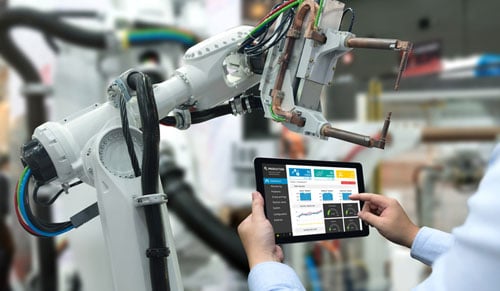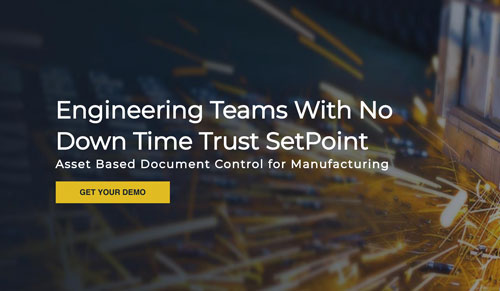
It’s not easy getting lean, but it’s vital for manufacturers that are seeking a competitive advantage.
According to the Lean Enterprise Research Centre, 60 percent of manufacturing operations are considered waste, which means they add no value to customers.
Manufacturers are aware of this challenge, and are responding with expanded initiatives aimed at enhancing productivity and eliminating waste.
If this sounds like your organization, you may be looking for ways to get employees involved in the process.
Let’s explore how Office 365 can help you get there.
Challenge: Collecting Ideas For Improvements
Lean manufacturing depends on collecting ideas on how to do things smarter. This is a big focus among businesses we work with.
One of our clients has a company-wide goal to recycle and reuse as many materials as possible in their operations, and one day, an employee noticed tiny metal particles from their production line were getting swept up and thrown in the trash. This person saw an opportunity to recycle those pieces and mentioned it on their SharePoint forum about lean thinking.
People thought it was a great idea, and changed the SOP so those particles get collected and reused. This is just the thing Office 365 is good for.
The really interesting part of this story is that idea came from one employee out of 5,000. How does a large enterprise with a campus full of employees enable one person’s idea to rise to the top?
Get Employees to Collaborate Using Microsoft Teams & SharePoint
The first step is providing a space where people can share ideas and collaborate.

It might be as simple as setting up a group focused on lean ideas, and allowing people to contribute. Anytime someone has an idea, they can just pick up a tablet or phone, log into the platform, and message the group.
That’s an easy way to collect ideas, and you can set up in Microsoft Teams or with a custom app on SharePoint. There are many different ways to set up for your forum. Microsoft provides the tools and you just have to choose the one that suits your company. Whatever app you go with, the important thing is to make sure it’s easy for people to collaborate.
How To Manage Employee Feedback
Now that you have a system for collecting employee feedback and ideas, how on earth do you manage this information and put it to good use?
There are a few ways you can tackle this. You can create a flow or process in Dynamics 365, or use an Outlook plugin that allows an admin to moderate ideas before they go on your list.
The whole point of lean thinking, of course, is getting all ideas on the table, so we don’t suggest moderating the submissions. A colleague might suggest a crazy idea that will never work, but another person might see it and offer a variation that could work.
Try setting up a shared mailbox where employees can send ideas from any device, and then use Microsoft Flow to automatically route ideas to a list where people can view, track, and comment on them.
Create a Community to Find the Best Ideas
One of the best ways of making sure the right ideas rise to the top is by encouraging people to comment on the ideas.

When you have a community of people sharing and commenting, magical things start to happen. Ideas get refined and improved organically, with everyone contributing to the end result.
You can also encourage people to “up-vote” ideas they like the most, then you can run a report that sorts through the list narrows it to the top 15 ideas people are voting and commenting on. This is a powerful and efficient way of finding the best ideas the group has to offer.
Microsoft uses this same process to improve their own products. They make changes to the platform based on ideas that generate the most buzz in the greater MS community.
Challenge: Finding Manuals & Documents Quickly
One of the biggest and most obvious challenge manufacturers face with lean practices is finding information quickly. When a machine on the production line goes down and operations grind to a halt, every minute counts.
One of our customers told us it took their engineers ten minutes to find the documentation they needed to fix machinery. Many of their technicians were still relying on printed copies of manuals, as well.
When a system went down, they would find a workstation with a computer, search through hundreds of folders and files, locate what they needed, and print the instructions. This was hardly the most efficient use of their time.
Search-based Intranet and Dynamics 365
An intranet with enhanced search features like our SetPoint app is vital for simplifying this process. It allows people to find documents the same way they would locate a new set of headphones on Amazon. Using filters and metadata, you can enable your employees to find current information in seconds rather than minutes.

This results in a huge savings of time and productivity on the factory floor.
You can also use apps like Dynamics to manage the processes employees follow in their work. You can assign tasks people need to follow and check off the list before moving to the next item.
Challenge: Communicating With Employees Without Email
All manufacturers have one thing in common.
The majority of their employees are not sitting at desks. Most of them are on a factory floor working on their feet, rarely getting a chance to check and respond to emails. This presents real communication and collaboration challenges for enterprise.
Office 365 Suite of Collaboration Apps
Office 365 solves this challenge by taking the conversation out of email, and moving it to collaboration apps people can use anytime, anywhere. Managers can broadcast news on SharePoint; employees can chat in groups on Microsoft Teams; people can follow processes in Dynamics; and submit reports through Power BI.
Your Office 365 platform is a hub that enables employees to communicate, find documents, and manage tasks right from their phones. These tools – like Dynamics, SetPoint, PowerBI, and our own Accelerated Intranet - all accomplish different things, but they two things really well: increase productivity and reduce waste.
Employees are an indispensable resource when it comes to improving processes. They know better than anyone where to trim fat from operations and enhance value. By using the right tools to keep them engaged in this endeavor, you will not only get the feedback you need to get leaner. You will find the process itself takes on a life of its own. That’s when you know your enterprise is on the right track.
Share